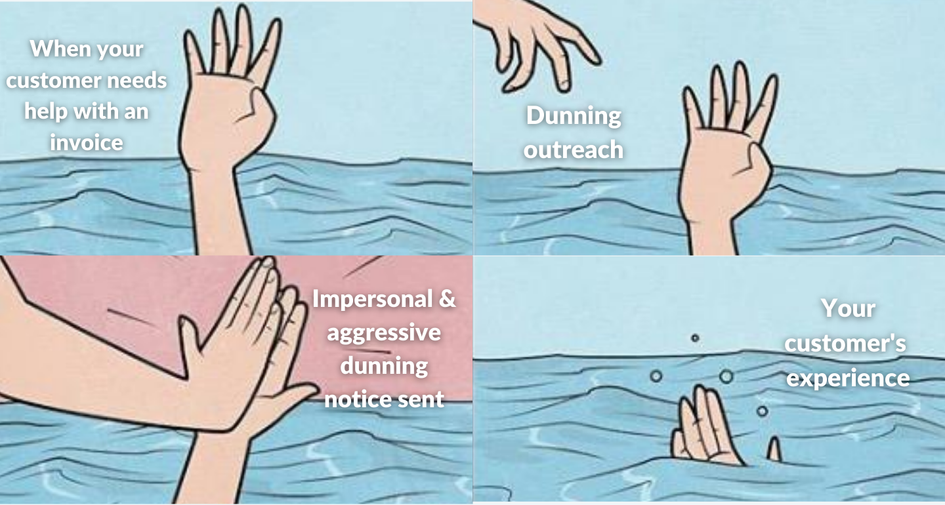Your Customer Experience Plan is Incomplete

Forbes’ 2021 CxO Growth Survey revealed that customer experience is a top priority for the entire c-suite and that 93% of CFOs plan to increase spending in key areas including customer experience. Yet, in a world where nearly every business knows that customer experience is core to how they must differentiate, compete, and grow the vast majority of companies continue to use blunt-force dunning approaches to collect payment from customers.

The bottom line is that dunning needs to go because it’s undermining even the best-laid customer experience plans.
The term has been around for more than 400 years, and it hasn’t aged particularly well. Back in 1620, dun was commonly understood both as a verb (“to insist on the payment of a debt”) and as a noun (“an agent employed to collect said debts”). Those dictionary definitions don’t quite describe the process, which often involved harassing, threatening, or even physically assaulting a debtor.
The meaning of the word has changed remarkably little over the years. Accounts Receivable teams hate the dunning process, whether it’s mailing out reminders about overdue bills, making phone calls to those who are 30, 60, or 90 days late with a payment, or calling in a collection agency. Customers don’t like being on the receiving end of any of these actions. Dunning can damage, sometimes irrevocably, a business relationship that has taken months or years to establish.
Accounts Receivable teams are charged with maintaining the cash flow into an organization. Is that even possible, especially in these tough financial times, without dunning? How do we increase the recovery rate for failed payments? How do we cut down on days sales outstanding?
Tesorio has worked with Accounts Receivable teams for years, and we understand the difficulties companies face as they struggle to increase collections and improve cash flow forecasting. That’s why we’re telling our own customers: “Stop dunning. Start campaigning.”
What does that mean? It means you shouldn’t look at collections as a way to shake a few dollars out of a customer’s pocket. Your campaigns should be similar to the ones used by your Marketing and Sales departments - customized, personalized, and based on a deep understanding of customers. Besides improving your company’s bottom line, they have the power to create positive customer experiences, improved customer loyalty, opportunities for upselling, and even strong marketing opportunities.
“Collections is a huge part of the customer experience train,” said Carlos Vega, co-founder and CEO of Tesorio. “If the collections part of the process is done well, it’s such a huge opportunity to further build that relationship. If not done effectively, it can hurt.”
To run effective campaigns, Accounts Receivable teams require the same types of integrated tools that Marketing and Sales departments have to streamline their process and give them the data they need to give their customers the best possible experience and outcome (getting paid). Tesorio offers the tools that will make your team’s workflow less transactional and more strategic.
If you’re still using old-fashioned spreadsheets to manage collections and forecast cash flow, then you’re likely detracting from the time your team could be using to positively and strategically engage customers. And it means that you’re not using, getting, and cross-functionally sharing valuable data on your customers and the best ways to connect with them. Are you reaching out too much — or too little? Are you sending out the right message? Are you emailing when you should be calling? A spreadsheet can’t give you these insights.
It’s only when you truly understand your customers that you can set up campaigns that will help you get past the concept of dunning. And it’s not just your team that will benefit. Your customers will be delighted to be working with a company that cares about them and their needs.